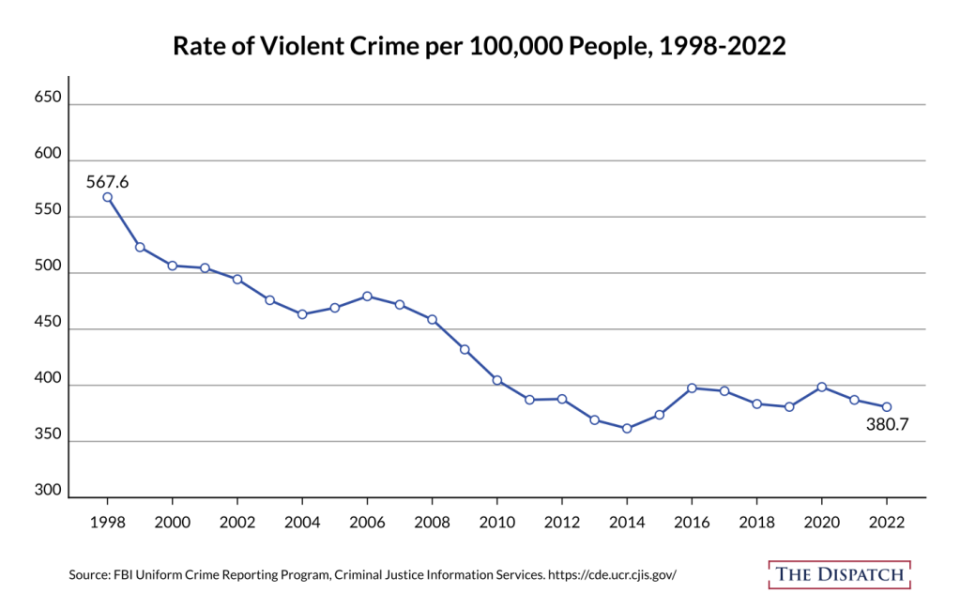The Federal Reserve Survey of Consumer Finances (SCF) is published every three years. The report is a financial snapshot of American households across demographic and economic groups, providing details on income, assets, debt, and net worth.
The latest SCF was conducted in 2022 and published in October 2023. American households reported an average retirement account balance of $333,940 and an average net worth of $1.06 million. Read on to see an age-based breakdown of those figures.
The average retirement account balance by age
Retirement savings is measured as the cumulative balance across individual retirement accounts (IRAs), Keogh accounts, and employer-sponsored accounts like 401(k) plans, 403(b) plans, and the Thrift Savings Plan. Importantly, it does not include investments held in individual brokerage accounts.
The chart below shows the average retirement account balance among American households based on the age of the reference person, defined as the male in mixed-sex couples and the older person in same-sex couples.
|
Age Group |
Average Retirement Savings |
|---|---|
|
18-34 |
$49,130 |
|
35-44 |
$141,520 |
|
45-54 |
$313,220 |
|
55-64 |
$537,560 |
|
65-74 |
$609,230 |
|
75+ |
$462,410 |
|
All Households |
$333,940 |
Data source: Federal Reserve 2022 Survey of Consumer Finances.
The average net worth by age
Net worth equals assets (financial and nonfinancial) minus debt liabilities. The most common financial assets reported by American households in the 2022 SCF were bank accounts (98.6%), retirement accounts (54.3%), and brokerage accounts (21%). The most common nonfinancial assets were vehicles (86.6%) and primary residences (66.1%).
Over three-quarters of American households reported some type of debt, with an average debt burden of $163,800. The most common sources of debt were credit cards (45.2%), vehicle loans (34.7%), and education loans (21.8%).
The chart below shows the average net worth among American households based on the age of the reference person.
|
Age Group |
Average Net Worth |
|---|---|
|
18-34 |
$183,380 |
|
35-44 |
$548,070 |
|
45-54 |
$971,270 |
|
55-64 |
$1.56 million |
|
65-74 |
$1.78 million |
|
75+ |
$1.62 million |
|
All Households |
$1.06 million |
Data source: Federal Reserve 2022 Survey of Consumer Finances.
The median retirement account balance and net worth by age
Averages can be misleading when working with asymmetric data, meaning data that does not follow an even distribution. Net worth and retirement savings are good examples of asymmetric data because wealth is not evenly distributed across the American populace. The top 10% of American households control 66.9% of total household wealth, according to the Federal Reserve Bank of St. Louis.
In this case, the asymmetric data skews the average higher because a small portion of the population is very wealthy. To that end, the median (middle) value is a better benchmark. By definition, 50% of data points are larger than the median, and 50% of data points are smaller than the median.
The chart below shows the median retirement account balance and the median net worth among American households based on the age of the reference person.
|
Age Group |
Median Retirement Savings |
Median Net Worth |
|---|---|---|
|
18-34 |
$18,880 |
$39,040 |
|
35-44 |
$45,000 |
$135,300 |
|
45-54 |
$115,000 |
$246,700 |
|
55-64 |
$185,000 |
$364,270 |
|
65-74 |
$200,000 |
$410,000 |
|
75+ |
$130,000 |
$334,700 |
|
All Households |
$87,000 |
$192,700 |
Data source: Federal Reserve 2022 Survey of Consumer Finances.
As shown above, the median American household reported a retirement account balance of $87,000 and a net worth of $192,700 in the 2022 SCF. That means half of American households reported larger retirement account balances and more wealth, and half of American households reported smaller retirement account balances and less wealth.
Those statistics may conjure feelings of dissatisfaction or even embarrassment in some readers. But anyone can improve their financial position with the right attitude and guidance. The first step is constructing a budget. Financial planners often recommend the 50-30-20 framework, as explained below.
-
Necessary expenses: 50% of income should be allocated to necessary expenses like groceries, gas, rent, and utilities. Minimum debt payments also belong in this category.
-
Discretionary expenses: 30% of income should be allocated to discretionary expenses like travel, entertainment, and luxury purchases.
-
Savings: 20% of income should be saved for retirement through individual accounts, employer-sponsored accounts, or some combination of the two. Debt payments above the minimum also belong in this category.
Typically, it’s best to pay off high-interest debt before investing additional dollars in brokerage or retirement accounts. The definition of high-interest debt ranges from 6% to 8%, but it ultimately depends on what your investments will earn. Of course, no one knows the future, so estimate very conservatively. You want to avoid a situation in which debt is compounding more quickly than invested dollars.
Once high-interest debt is paid off — a good example is credit card debt — financial planners usually advise paying down other debt gradually, while simultaneously saving for retirement. One common recommendation is to ensure contributions to employer-sponsored plans are sufficient to earn the full company match. Not all employers offer matching contributions, but those that do are essentially offering free money.
Beyond that, I think additional savings should be invested through an IRA or personal brokerage account, simply because they provide more flexibility. Anyone not sure where to start should consider an index fund that tracks the S&P 500, a benchmark for the overall U.S. stock market. Additionally, with interest rates at their highest level in decades, now is a good time to transfer cash to a high-yield savings account.
What stocks should you add to your retirement portfolio?
The Motley Fool Stock Advisor analyst team just identified what they believe are the 10 best stocks for investors to buy now. The 10 stocks that made the cut could produce monster returns in the coming years, potentially setting you up for a more prosperous retirement.
Consider when Nvidia made this list on April 15, 2005… if you invested $1,000 at the time of our recommendation, you’d have $740,690!*
Stock Advisor provides investors with an easy-to-follow blueprint for success, including guidance on building a portfolio, regular updates from analysts, and two new stock picks each month. The Stock Advisor service has more than quadrupled the return of S&P 500 since 2002*.
Trevor Jennewine has no position in any of the stocks mentioned. The Motley Fool has no position in any of the stocks mentioned. The Motley Fool has a disclosure policy.
Here’s the Average Net Worth and Retirement Savings Among American Households by Age was originally published by The Motley Fool
Signup bonus from




